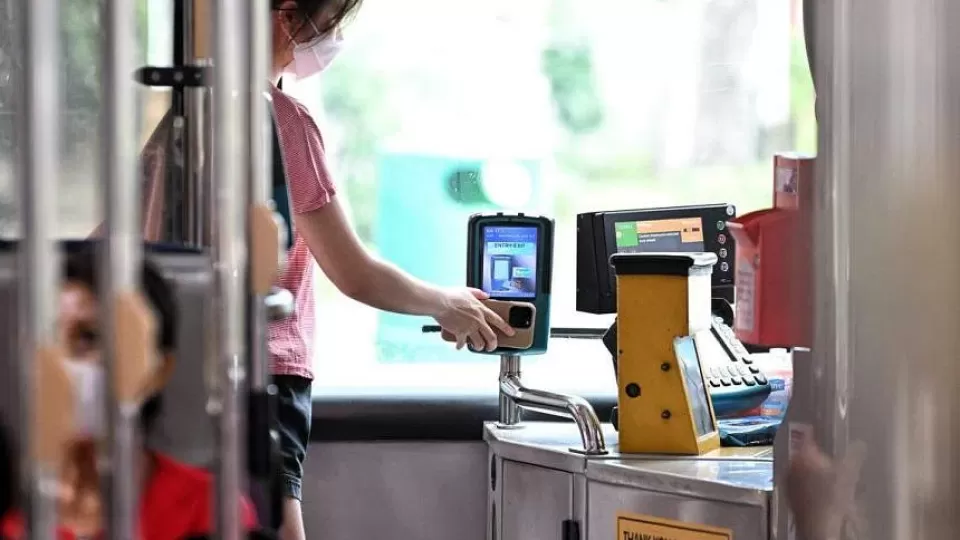April 26, 2023
SINGAPORE – The changes made to the formula used to determine train and bus fares here are unlikely to play a big part in determining the margin of future fare changes, analysts said.
Instead, other factors such as record inflation, elevated energy costs and political sensitivities are key in determining how much fares will actually go up by, they added as they weighed in on the updated fare formula announced by the Public Transport Council (PTC) on Tuesday.
Public transport fares are set to rise in 2023, given a 10.6 per cent fare hike that was rolled over from the 2022 fare review exercise.
For the new fare formula, the PTC had opted not to change three of the five components, which reflect year-on-year changes in core inflation, wages and energy prices.
While the productivity component of the formula remains fixed at 0.1 per cent for the next five years, it has been changed to a productivity contribution, instead of the existing productivity extraction where half of the transport operators’ productivity gains was shared with passengers.
The biggest change is the introduction of a new fixed capacity adjustment factor, which works out to 1.1 per cent per year for five years. It replaces the network capacity factor (NCF) – a variable component that reflected operating costs due to network capacity changes relative to ridership.
Dr Timothy Wong, a senior lecturer at National University of Singapore’s (NUS) department of economics, said the change is positive since changes to the NCF are harder for passengers to understand, compared with the other components of the formula.
He said switching to a fixed capacity adjustment factor suggests that the PTC is future-proofing the fare formula against more dramatic changes in ridership, which has not fully recovered since the Covid-19 pandemic hit.
“The PTC is operating under the assumption that ridership may not be as stable as it used to be pre-pandemic. Not only is it possible that another pandemic will cause a large disruption in ridership again, but in a new world where flexible work arrangements are more prevalent, ridership can more easily fluctuate due to changes in the environment,” he added.
NUS Associate Professor Raymond Ong, who researches transport infrastructure, said the new formula has locked in what can be controlled – namely the public transport network’s expansion from 2020 to 2026.
The three components of inflation, wages and energy costs are not as predictable or controllable given the larger environment that Singapore operates in, he added.
Singapore Management University (SMU) Assistant Professor Terence Fan, who specialises in transport issues, said the PTC has done well to smooth out the impact of lower ridership on transport fares.
But the elephant in the room is the increase in inflation and wage levels in 2022, he said.
“If inflation continues to rise, then we are going to see that being fed back into fare increases… That could overwhelm the changes made to how productivity and network capacity are calculated,” Prof Fan added.
He also noted that the consumer price index has moderated and there has also been a gradual fall in energy prices.
“Hopefully that will rein in some of the expected fare increase,” he said, adding that the PTC has had a track record of spreading fare increases over a longer period of time.
Associate Professor Walter Theseira from the Singapore University of Social Sciences said current indicators suggest that the amount of increase from the upcoming fare review would be “an unpleasant figure” to pass on to passengers.
SMU law don Eugene Tan highlighted the decision by the PTC to retain a mechanism that allows it to defer fare adjustments to subsequent fare reviews, saying it is a “huge unknown variable”.
In 2022, the maximum fare increase derived from the formula was 13.5 per cent. The PTC granted a 2.9 per cent hike, and rolled over the remaining 10.6 per cent to this year’s exercise.
However, Associate Professor Tan raised concerns that the continued deferment of fare increases could undermine the fare formula and create an expectation from the public that future fare hikes will not be implemented fully.
“If there is the conviction that this formula ensures affordable fares and sustainable public transport, then it must only be in very exceptional circumstances that the fare adjustment is deferred, whether in full or partially. If not, are you then compromising on these twin objectives?” Prof Tan asked.
He added: “It raises questions about whether the formula is fit for purpose, or that ultimately the primary driver for the quantum of increase is political sentiment… With the elections coming in a year or two, it adds another element of uncertainty… whether an eye will be kept on the political sensitivity.”

